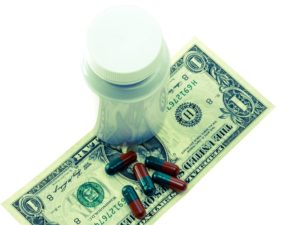Drug companies and device makers often report the effectiveness of a drug in relative numbers instead of absolute numbers. I’m going to show you how to figure relative and absolute numbers so that you can look at a study and see the effectiveness of a drug. In this example I will be using a real study on a drug called Tamoxifen.
Tamoxifen is reported to be about 27-33% effective in preventing breast cancer. High numbers like this are often relative numbers. Let’s figure out what this really means.
Tamoxifen for prevention of breast cancer: extended long-term follow-up of the IBIS-I breast cancer prevention trial
7154 women in study
3575 women in placebo group, 350 or 9.8% developed cancer
3579 women in Tamoxifen group, 251 or 7% developed cancer
To find relative and absolute risk use the following formula.
1. Find the percentages.
(350/3575)100 = 9.8% placebo group
(251/3579)100 = 7% Tamoxifen group
2. Subtract the placebo group from the Tamoxifen group.
9.8% – 7% = 2.8%
3. Divide the answer by the placebo group and multiply the answer by 100.
(2.8% / 9.8%)100 = 28%
The relative effectiveness of Tamoxifen is 28%.
The absolute effectiveness of Tamoxifen is 2.8%.
This means that the drug has a 97% chance of NOT preventing breast cancer. In addition to this you must also consider the side effects of the drug some of which are: absent, missed, or irregular menstrual periods, bladder pain, blindness, bloating or swelling of the face, arms, hands, lower legs, or feet, bloody or cloudy urine, blurred vision, chills, confusion, difficult breathing, burning during urination, dizziness, chest pain, nervousness, etc. Is it really worth the risk?
I hope this information has helped you to see that the drug companies and the medical industry only care about one thing PROFIT. They do not care about your health.
References:
Dr Pam Popper: Breast Cancer Prevention Start in Childhood; Risks/Benefits of Tamoxifen
Tamoxifen Continues to Shine for Breast Cancer Prevention

